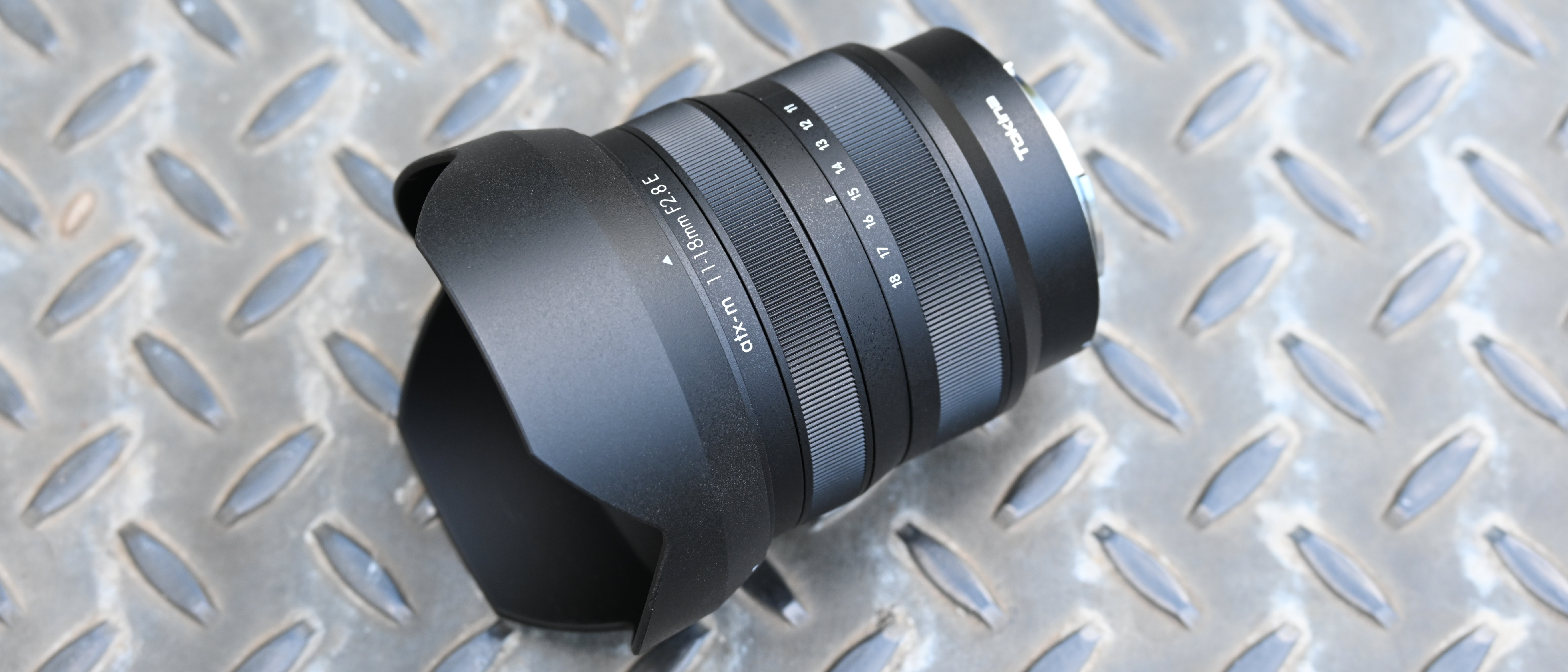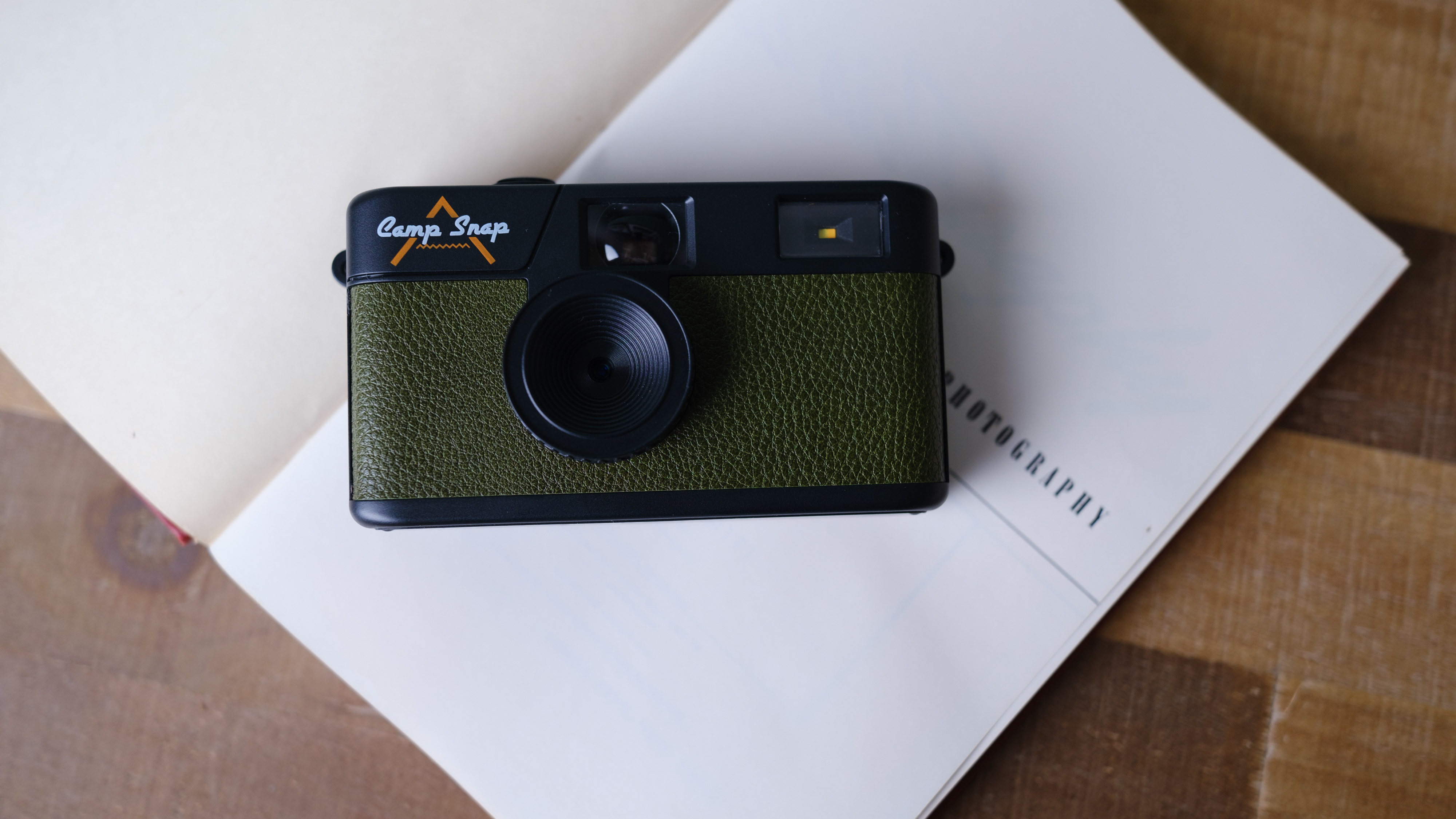Digital Camera World Verdict
Compact and lightweight for a wide-angle zoom with a fast and constant f/2.8 aperture, the Tokina feels right at home on Sony’s svelte APS-C format mirrorless bodies. The little lens goes large on performance, however, with fast and virtually silent autofocus and impressive image quality throughout its zoom range. Handling is refined and, all things considered, the lens is great value at the price.
Pros
- +
Wide maximum viewing angle
- +
Constant f/2.8 aperture
- +
Compact and lightweight
Cons
- -
Fairly limited overall zoom range
- -
Not weather-sealed
Why you can trust Digital Camera World
The Tokina atx-m 11-18mm F2.8 E harks back to the company’s 11-16mm f/2.8 lens for DSLRs, which was one of the very first ultra-wide-angle zooms to hit the market for APS-C format digital cameras. It’s actually still available today as a refreshed ‘atx-i 11-16mm F2.8 CF’ edition. The E-mount 11-18mm lens represents a new design for Sony APS-C format mirrorless cameras, with a slightly bigger zoom range while retaining the same fast and constant f/2.8 aperture rating.
Specifications
Mount: Sony E
Full-frame: No
Autofocus: Yes
Stabilization: No
Lens construction: 13 elements in 11 groups
Angle of view: 104.3-76.7 degrees
Diaphragm blades: 9
Minimum aperture: f/22
Minimum focusing distance: 0.19m
Maximum magnification ratio: 0.1x
Filter size: 67mm
Dimensions: 74x74mm
Weight: 335g
Key features
A ‘key feature’ that’s noticeably absent is Tokina’s typical one-touch focus clutch mechanism that enables you to switch between autofocus and manual focus by snapping the focus ring forwards and backwards. We’ve never been fans anyway, and prefer the full-time manual override that’s more common in modern lenses. This lens obliges with a typically fast and near-silent linear stepping motor, which enables full-time override as well as allowing for smooth autofocus transitions when shooting video.
The fast and constant f/2.8 aperture is another bonus, especially considering that so many recent zoom lenses for mirrorless cameras have decidedly slow aperture ratings. It makes the Tokina highly suitable for shooting handheld architectural interiors and twilight cityscapes, as well as the more workaday sweeping landscape vistas for which wide-angle zooms are so useful. The relatively fast aperture also makes it well suited to astrophotography.
Optical finery includes a precision molded aspherical element towards the front and a glass molded aspherical element towards the rear, along with two SD (Super-low Dispersion) elements. The aim is for enhanced sharpness, contrast and color rendition, with a reduction in distortions, chromatic aberrations and coma, the last of which is a further bonus for astrophotography.
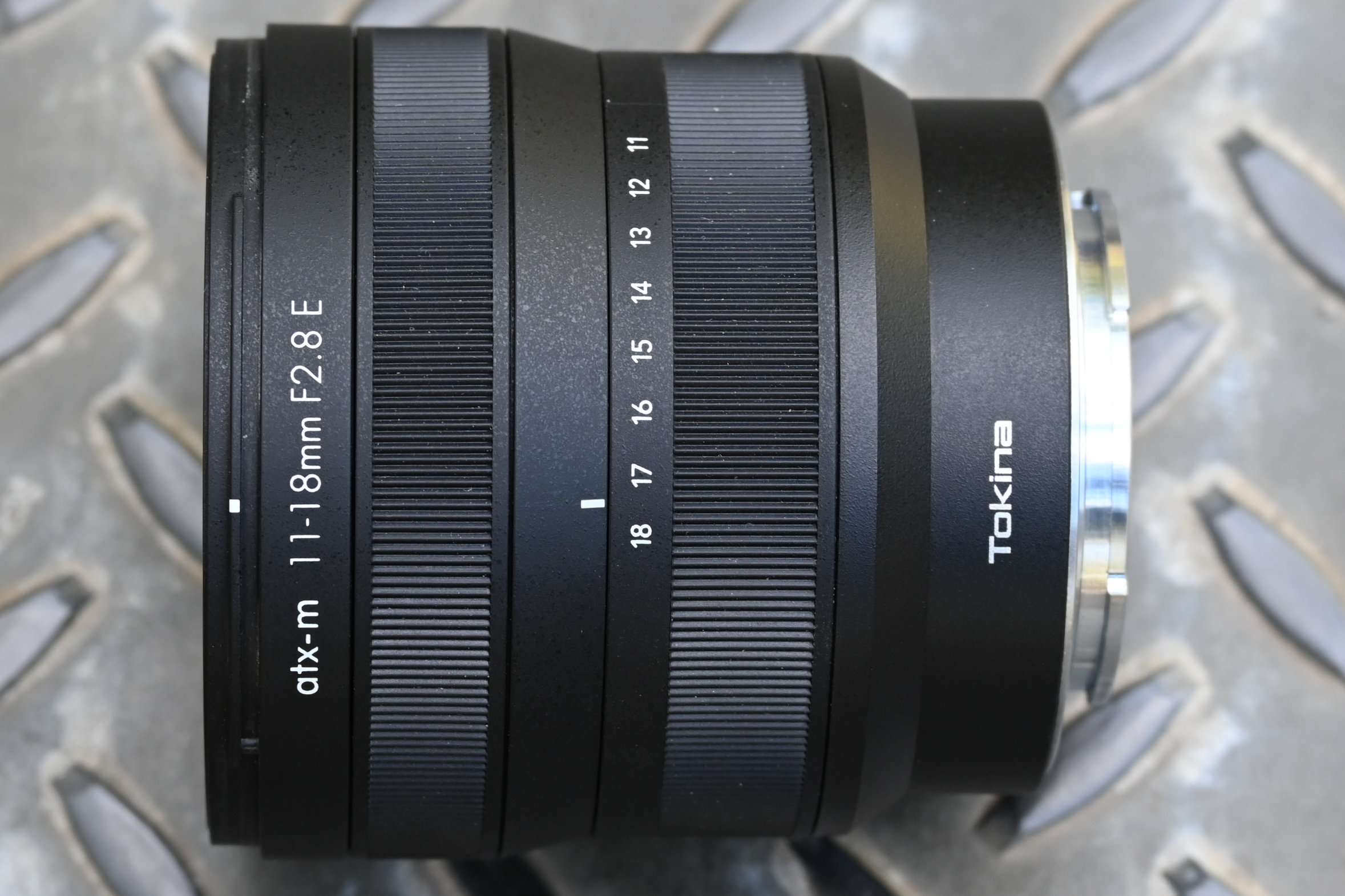
Unlike many ultra-wide lenses, the Tokina has a separate, bayonet-fit hood rather than an integral hood that forms part of the casing. As such, a filter attachment thread is featured, with a modest diameter of 67mm.
Build and handling
Build quality feels very convincing, with a solid metal mounting plate and a quality feel to the plastic casing. The mount also features a USB port, which can be used to apply firmware updates if and when necessary.
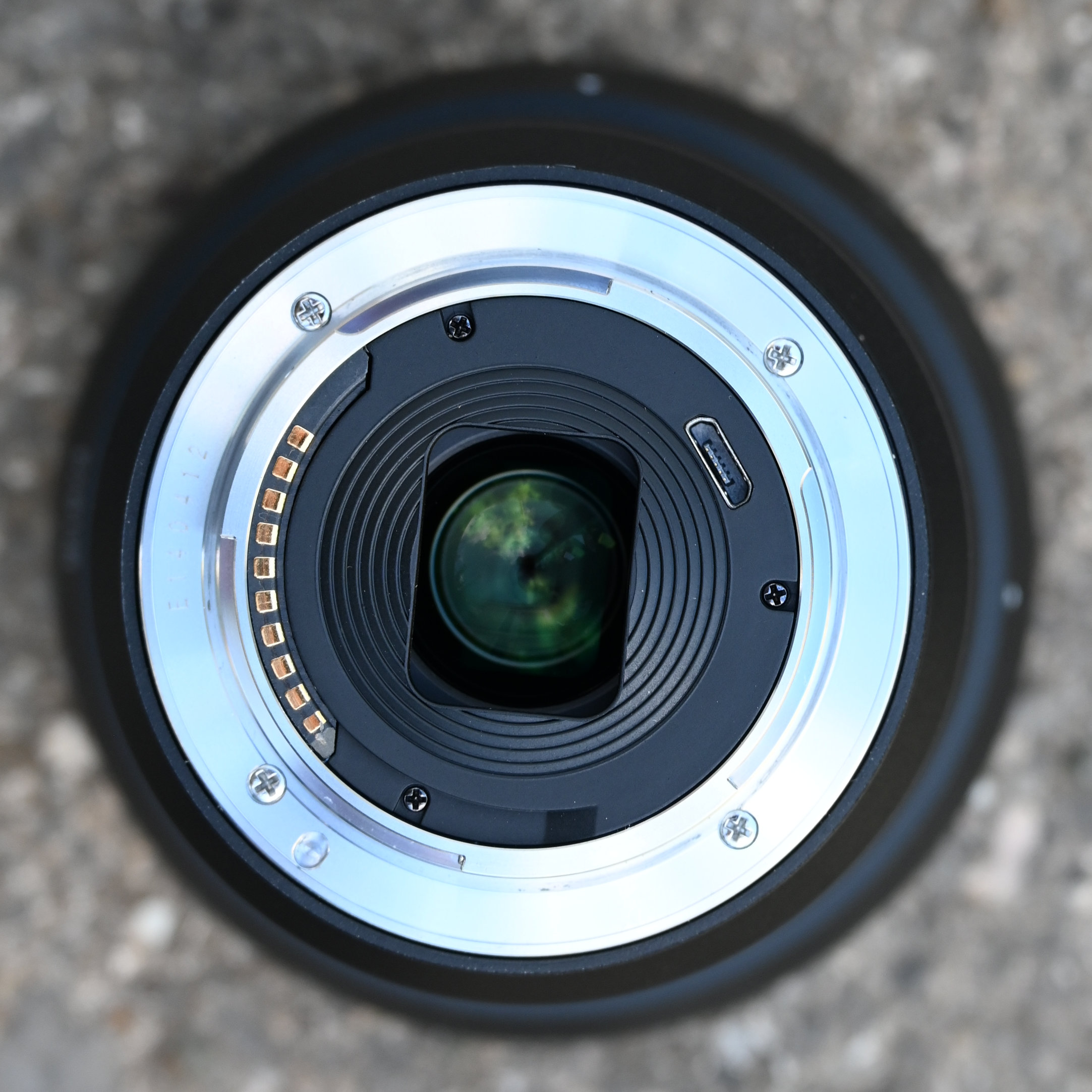
Handling feels very refined with a silky-smooth action to the zoom and focus rings. Focusing is fully internal but the lens physically extends slightly as you zoom from the longest 18mm mark through to 11mm. Due to the compact nature of the lens, it’s no surprise that an aperture control ring and lens function buttons are omitted.
Performance
In our real-world tests, the autofocus system proved very quick and quiet, as advertised. Image quality is excellent in all respects, with superb sharpness across the whole image frame. Chromatic aberrations are entirely negligible and there’s very little distortion, apart from a little barrel distortion at the shortest zoom setting. Even so, the Tokina is streets ahead of many other wide-angle lenses for mirrorless cameras in this respect, which rely entirely on in-camera correction.
Vignetting can be noticeable at f/2.8, mostly at the shortest focal length. However, as with chromatic aberration and distortion, automatic in-camera corrections are available if you wish to use them.
Sample images


Lab results
We run a range of lab tests under controlled conditions, using the Imatest Master testing suite. Photos of test charts are taken across the range of apertures and zooms (where available), then analyzed for sharpness, distortion and chromatic aberrations.
We use Imatest SFR (spatial frequency response) charts and analysis software to plot lens resolution at the center of the image frame, corners and mid-point distances, across the range of aperture settings and, with zoom lenses, at four different focal lengths. The tests also measure distortion and color fringing (chromatic aberration).
Sharpness:
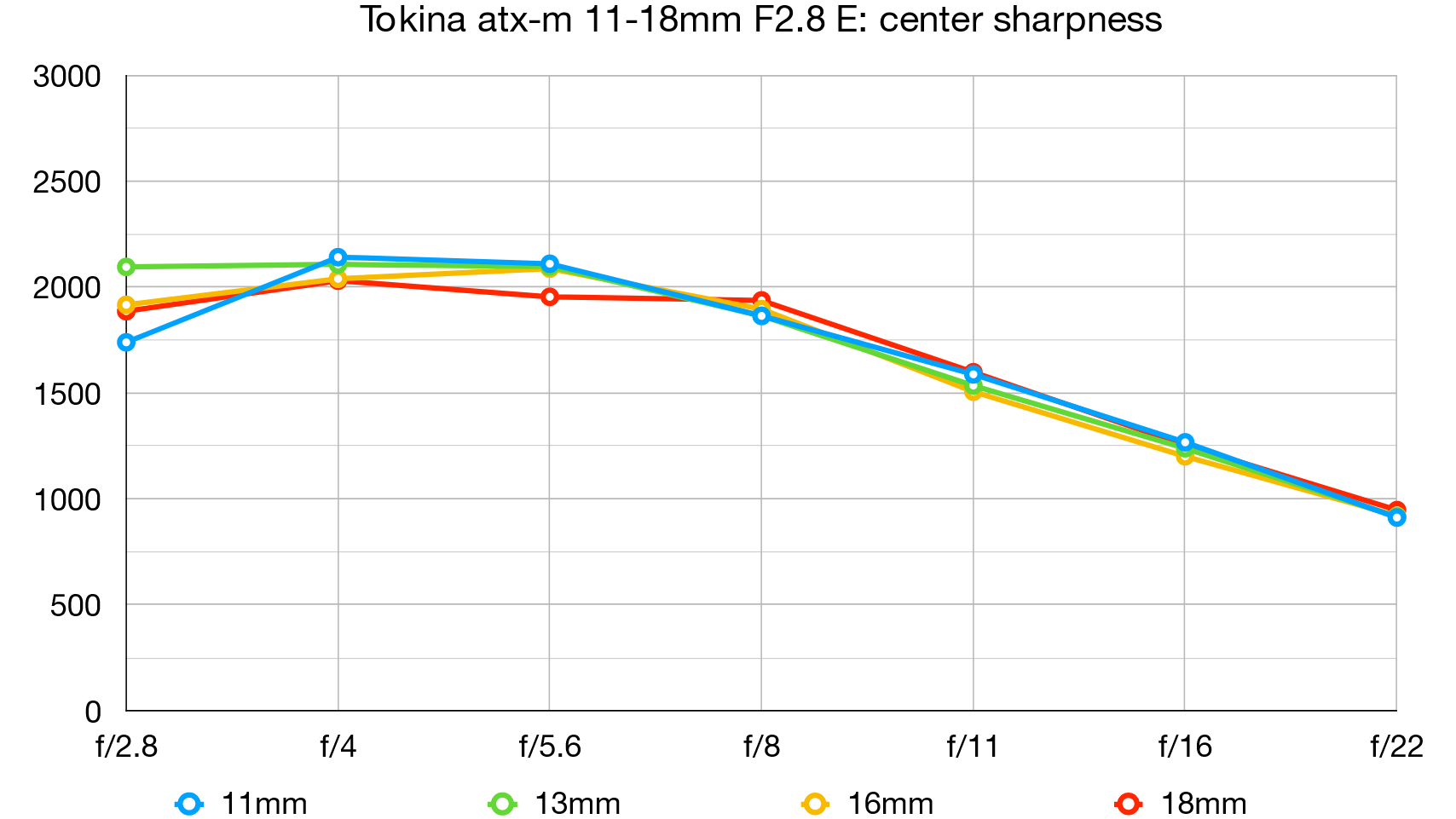
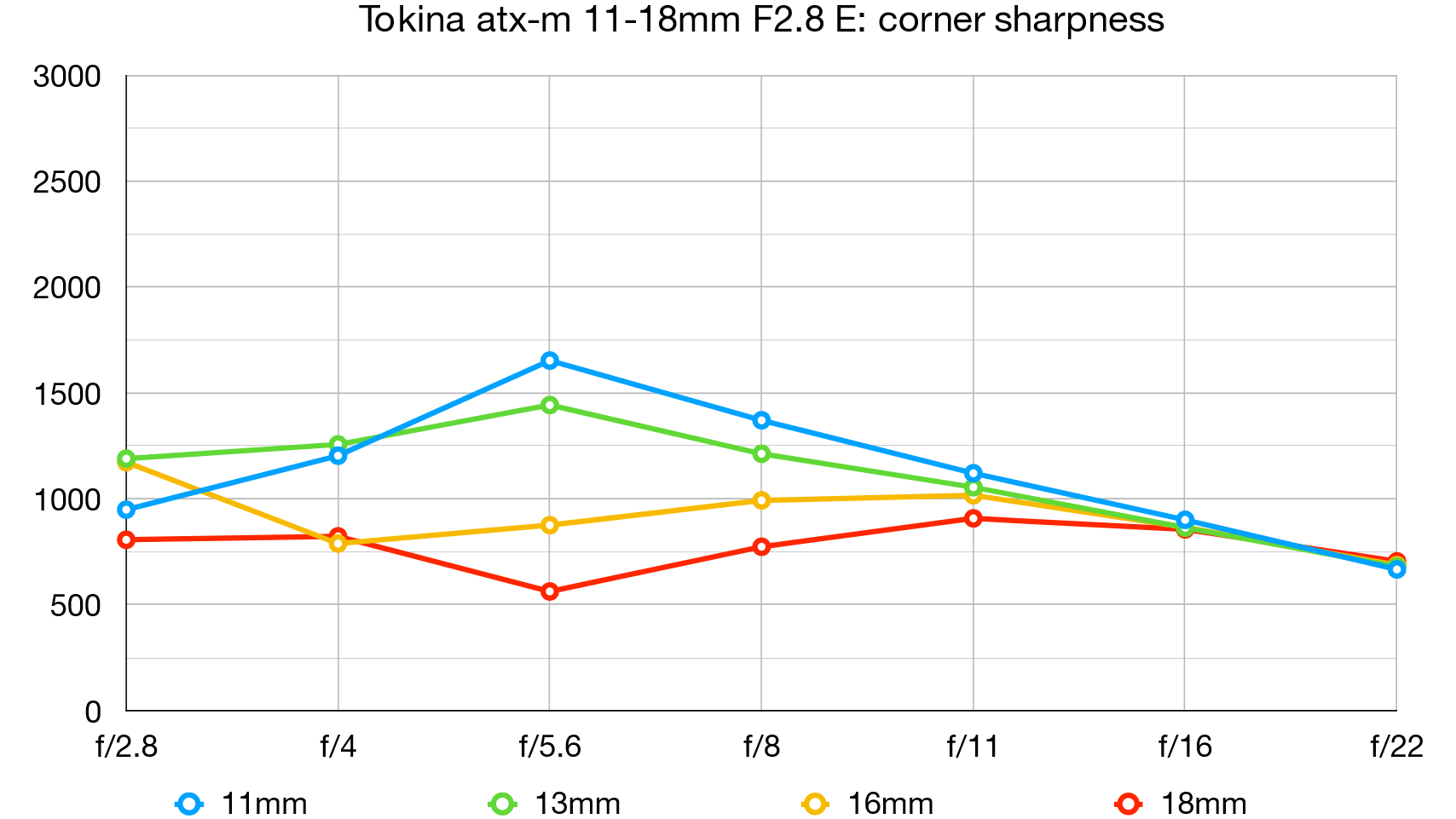
Levels of sharpness are excellent across the whole image frame in real-world shooting but, as is normally the case when lab-testing ultra-wide-angle zooms, results for edge-sharpness are unflattering due to the close proximity of the test charts.
Fringing:
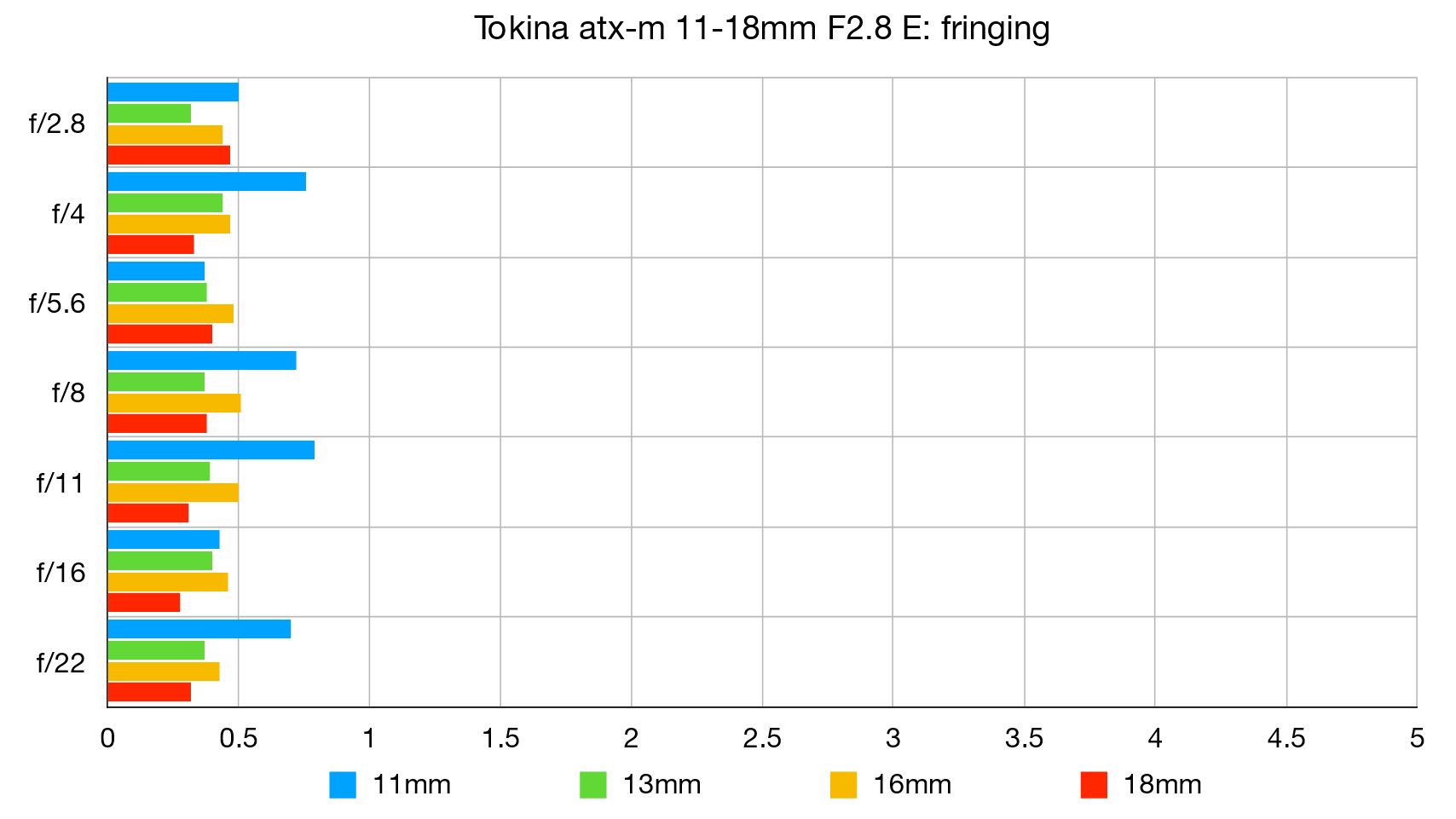
Color fringing is absolutely negligible, even with automatic in-camera correction switched off. That holds true right out to the extreme corners of the image frame, at all zoom and aperture settings.
Distortion:
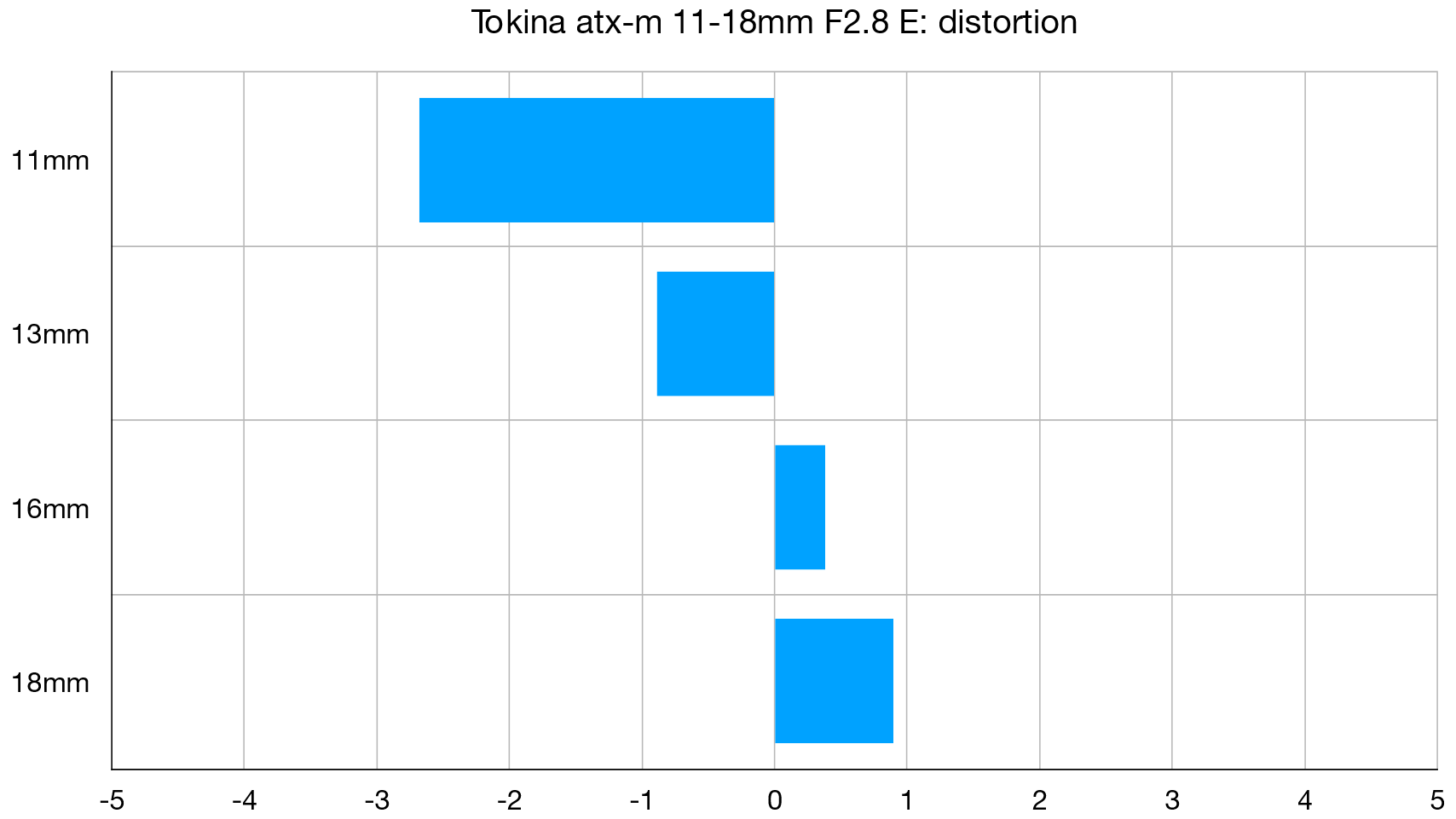
Barrel distortion at 11mm is minimal for such a wide-angle zoom and it dies away at 13mm. There’s just a feint touch of pincushion in the 16-18mm sector of the zoom range but in-camera correction is available.
Verdict
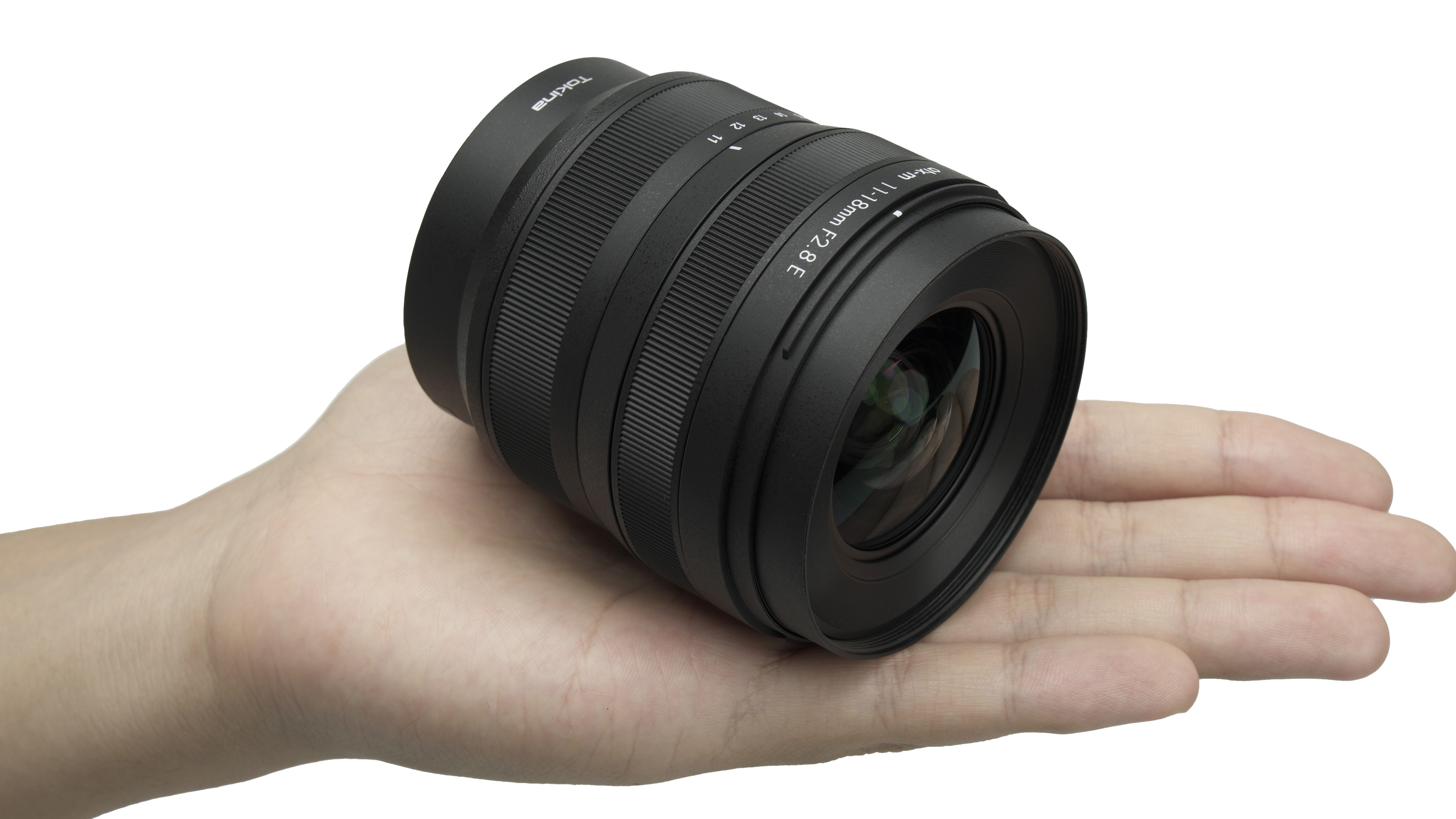
Compact and lightweight for a wide-angle zoom with a fast and constant f/2.8 aperture, the Tokina feels right at home on Sony’s svelte APS-C format mirrorless bodies. The little lens goes large on performance, however, with fast and virtually silent autofocus and impressive image quality throughout its zoom range. Handling is refined and, all things considered, the lens is great value at the price.
Read more:
• Best camera lenses to get
• Best Canon lenses
• Best Nikon lenses
• Best Sony lenses
Matthew Richards is a photographer and journalist who has spent years using and reviewing all manner of photo gear. He is Digital Camera World's principal lens reviewer – and has tested more primes and zooms than most people have had hot dinners!
His expertise with equipment doesn’t end there, though. He is also an encyclopedia when it comes to all manner of cameras, camera holsters and bags, flashguns, tripods and heads, printers, papers and inks, and just about anything imaging-related.
In an earlier life he was a broadcast engineer at the BBC, as well as a former editor of PC Guide.
